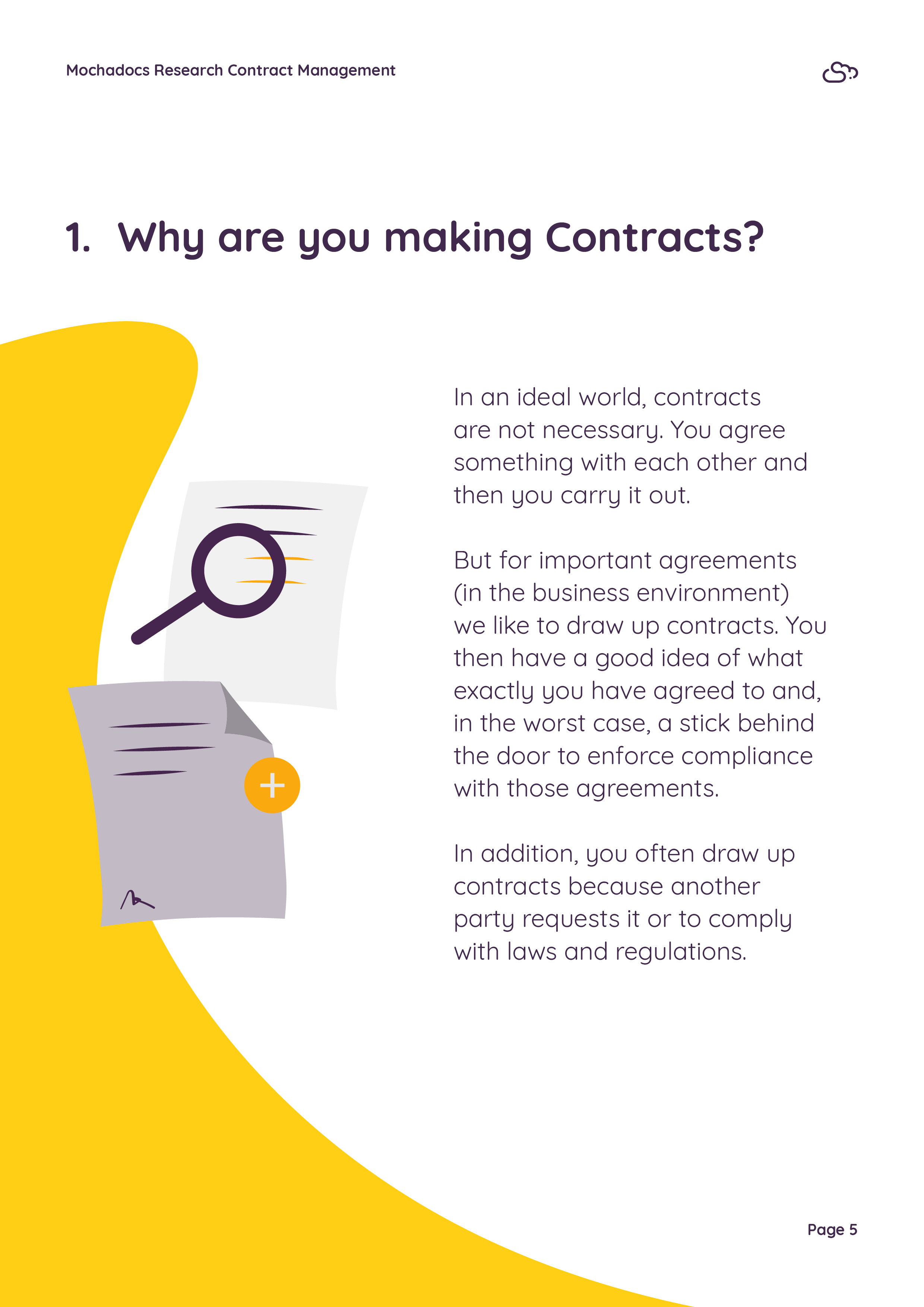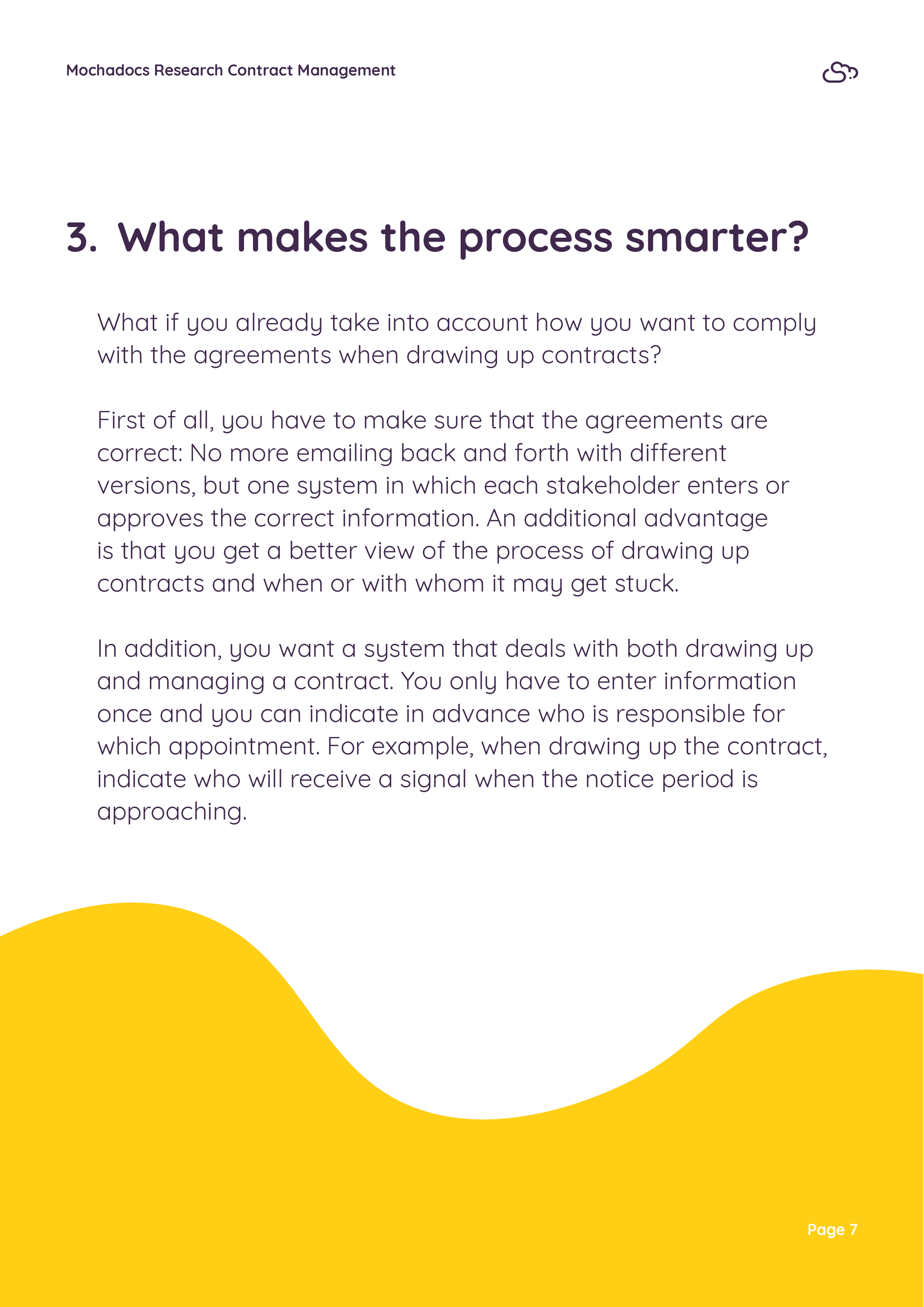How do you make a Contract?
Before signing, you are emailing back and forth with documents or templates. Sometimes the process is delayed or you get confused about different versions.
Conclusion
But how to make contracts, doesn’t always fit well with the why. A sloppy drafting process entails risks: You have not recorded the correct agreements or forget to keep them.
Contract Creation eBook: What is Contract Creation?


Content eBook
What is this eBook about

In an ideal world, contracts
are not necessary. You agree something with each other and then you carry it out.
But for important agreements (in the business environment) we like to draw up contracts. You then have a good idea of what exactly you have agreed to and, in the worst case, a stick behind the door to enforce compliance with those agreements.

What if you already take into account how you want to comply with the agreements when drawing up contracts?
First of all, you have to make sure that the agreements are correct: No more emailing back and forth with different versions, but one system in which each stakeholder enters or approves the correct information. An additional advantage is that you get a better view of the process of drawing up contracts and when or with whom it may get stuck.
Why are you making Contracts?
In an ideal world, contracts
are not necessary. You agree something with each other and then you carry it out.
How do you make a Contract?
You (initially) pay a lot of attention to agreements. Before signing, you are emailing back and forth with documents or templates. Sometimes the process is delayed or you get confused about different versions.
What makes the process smarter?
First of all, you have to make sure that the agreements are correct: No more emailing back and forth with different versions, but one system in which each stakeholder enters or approves the correct information.


